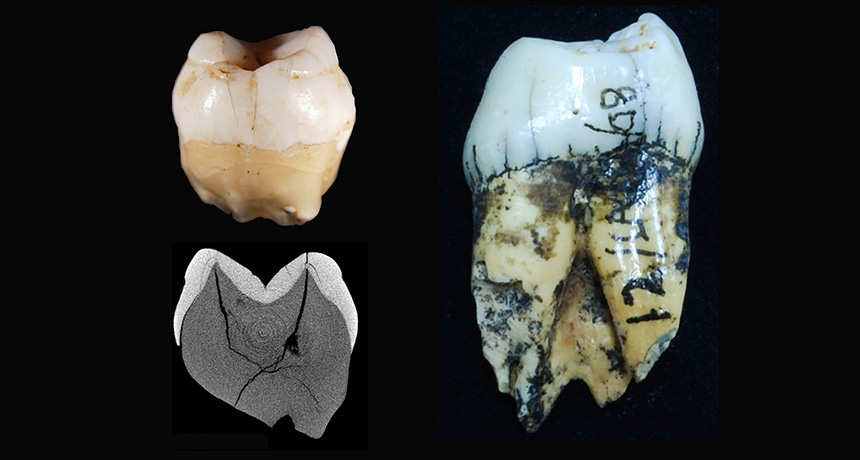Ancient people arrived in Sumatra’s rainforests more than 60,000 years ago

JUNGLE TEETH Human teeth found in a Sumatran cave (one shown, top left; scan of its inner structure, bottom left), an orangutan tooth (right) and remains of other rainforest animals from the same cave indicate that people inhabited this challenging environment as early as 73,000 years ago.
Tanya Smith, Rokus Awe Due







